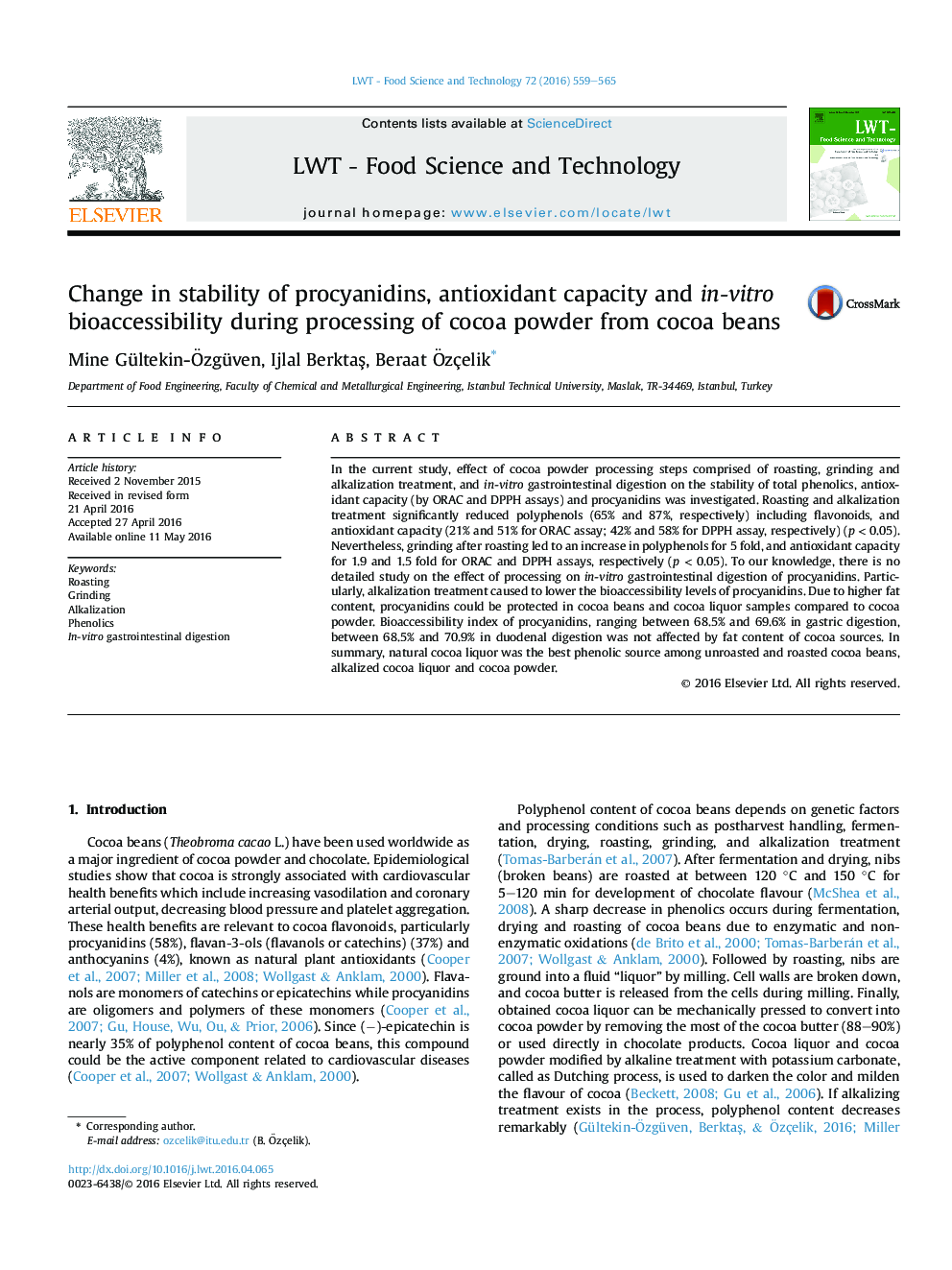| Article ID | Journal | Published Year | Pages | File Type |
|---|---|---|---|---|
| 4563317 | LWT - Food Science and Technology | 2016 | 7 Pages |
•Roasting and alkalization reduced polyphenols (65% and 87%), respectively.•Roasting reduced antioxidant capacity (21% for DPPH assay and 51% for ORAC assay).•Alkalization reduced antioxidant capacity (42% for DPPH assay and 58% for ORAC assay).•Bioaccessibility index of procyanidins ranged between 68.5% and 70.9%.•Alkalization treatment caused to lower bioaccessibility level of procyanidins.
In the current study, effect of cocoa powder processing steps comprised of roasting, grinding and alkalization treatment, and in-vitro gastrointestinal digestion on the stability of total phenolics, antioxidant capacity (by ORAC and DPPH assays) and procyanidins was investigated. Roasting and alkalization treatment significantly reduced polyphenols (65% and 87%, respectively) including flavonoids, and antioxidant capacity (21% and 51% for ORAC assay; 42% and 58% for DPPH assay, respectively) (p < 0.05). Nevertheless, grinding after roasting led to an increase in polyphenols for 5 fold, and antioxidant capacity for 1.9 and 1.5 fold for ORAC and DPPH assays, respectively (p < 0.05). To our knowledge, there is no detailed study on the effect of processing on in-vitro gastrointestinal digestion of procyanidins. Particularly, alkalization treatment caused to lower the bioaccessibility levels of procyanidins. Due to higher fat content, procyanidins could be protected in cocoa beans and cocoa liquor samples compared to cocoa powder. Bioaccessibility index of procyanidins, ranging between 68.5% and 69.6% in gastric digestion, between 68.5% and 70.9% in duodenal digestion was not affected by fat content of cocoa sources. In summary, natural cocoa liquor was the best phenolic source among unroasted and roasted cocoa beans, alkalized cocoa liquor and cocoa powder.
